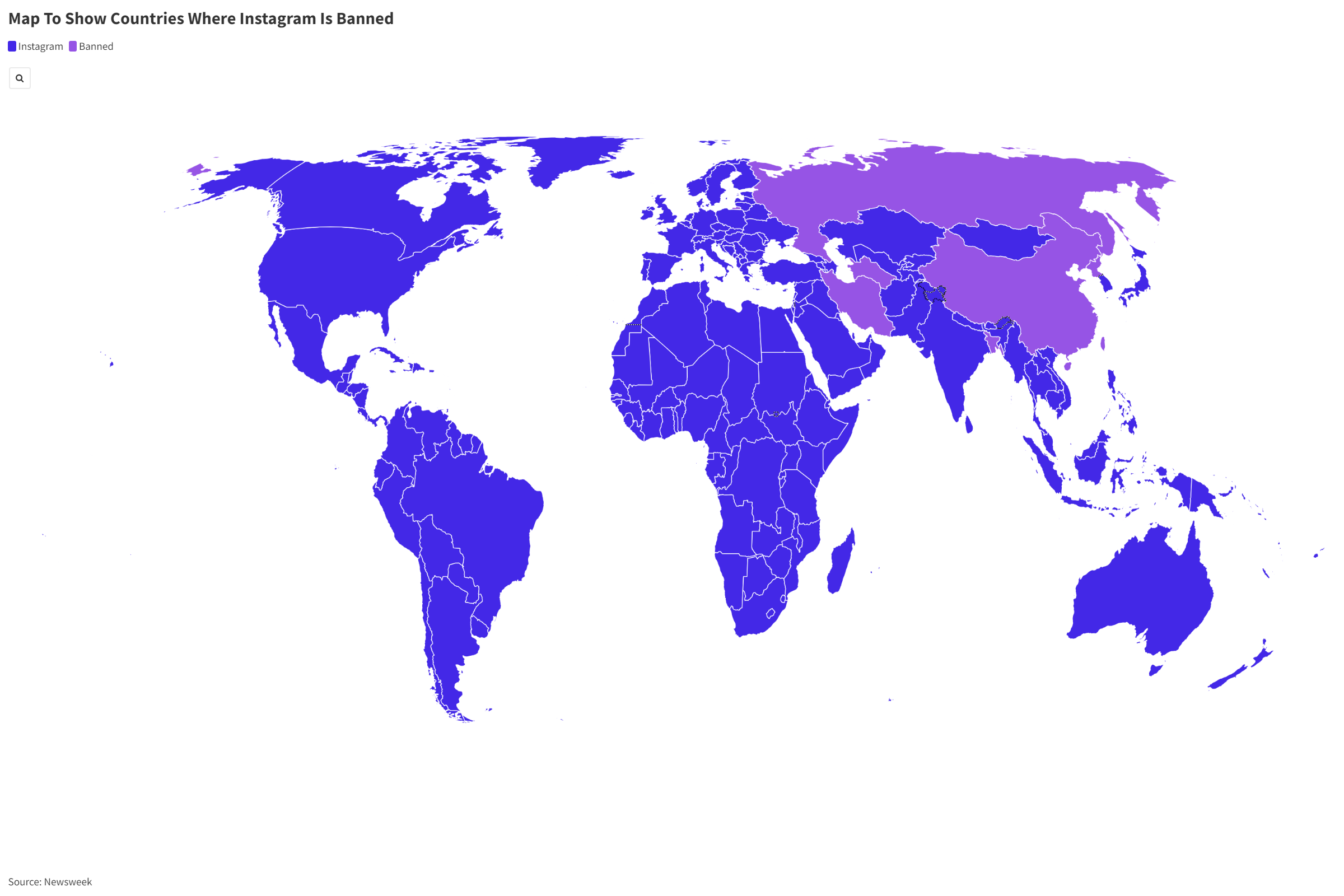Almost 14 years after its launch in October 2010, Instagram is still dominating as a go-to platform for messaging, sharing, and watching content.
It stands third in the rankings of the most popular social media sites, behind Facebook and YouTube, as of April 2024, and the U.S. is the country with the second highest number of users at 169.7 million, after India with 362.9 million, as of January 2024. Of its users, 62.3 percent are under the age of 34.
Like its fellow Mata-owned platform Facebook, Instagram is banned in a number of countries, including Russia, North Korea, Iran, Bangladesh, China, and Turkmenistan, as illustrated in the map below.
Why is Instagram banned in some countries?
The app has been banned often during times of unrest or ahead of elections. In China, Instagram was blocked in 2014 when pro-democracy protests in Hong Kong were taking place, the Financial Times reported — a ban still in place today.
A year later, warnings appeared on Instagram accounts in North Korea, noting that the site is blacklisted for harmful content, the Associated Press reported at the time. It has remained banned in the country.
In Uganda, the social media platform was banned before the 2021 January elections, which government figures said was for the “security of our country,” but it was restored a month later, according to Voice of America.
Mauricio Santana/Getty Images
The social media app was banned in Russia in March 2022, just after its invasion of Ukraine, according to the BBC. The country’s state media watchdog Roskomnadzor said Instagram would be blocked because of “calls for violence” against Russian soldiers.
That same year, Turkmenistan tightened its internet security and Instagram has been banned since, according to Voice of America. Iran also restricted all major social media platforms, including Instagram, Twitter, YouTube, and Telegram, in 2022.
On August 2, it was reported that Bangladesh had banned Instagram, TikTok, WhatsApp, and YouTube, amid widespread unrest relating to the plan to reform the country’s quota system for government jobs, according to the Times of India.
On the same day, in Turkey, the app was banned, for reportedly failing to comply with the country’s “laws and rules”, according to Reuters, but was then restored on August 10.
Are there other reasons to ban Instagram?
Aside from government censorship, discussions on the mental health impact of social media, especially Instagram, have proven divisive.
The U.S. surgeon general Vivek Murthy supports age bans and warning labels for YouTube, TikTok, and Instagram, while others argue that bans may actually be to the detriment the wellbeing of young people as it could prevent them from having access to mental health support available on the platform.
Professor Karen Mansfield, a researcher at the Oxford Internet Institute, told Newsweek that “there is insufficient evidence to conclude that banning social media, or specific platforms such as Instagram, will protect teenagers’ mental health or wellbeing.”
She added that rather than banning the app, “It would be better to set standards for tech companies to prevent harm and maximize the benefits for everyone who continues to use these platforms.”
Do you have a story we should be covering? Do you have any questions about this article? Contact LiveNews@newsweek.com.
